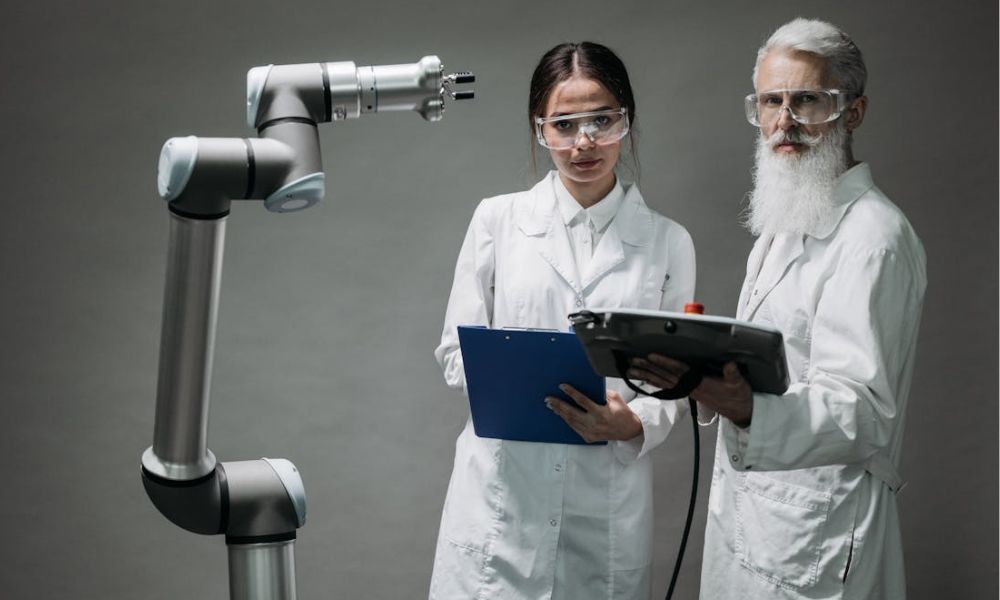The arrival of technology in the workplace is no longer surprising, but the scale at which robots are making their way to workspaces concerns many. China’s robot-to-worker density has reportedly surpassed that of Germany and is nearing parity with South Korea. The rise in workplace automation is frequently discussed from the perspective of AI, but a glimpse at the labor sector shows that there is a parallel rise of robotics within the workplace as well. The rising robot density trends promise productivity gains, but what about their impact on employees?

As China’s robot-to-worker density rises, automation encroaches on worker territory. What does this mean for employees? (Image: Pexels)
China’s Robot-to-Worker Density Is on the Rise: Notes for HR
Reports from The Financial Times and Wccftech found that the robot-to-worker density in China was scaling up at an impressive pace, adding up to a whole 280,000 industrial robots employed yearly. Contrary to what some believe, the robot adoption rates in China aren’t pushing up labor costs, but allowing them to decrease instead.
With the high unemployment rates, economic uncertainties, and far-reaching changes to social security, it is surprising to see this shift towards automation. However, with an aging population that is unlikely to be equipped for labor in coming years, China’s preference for automation does make sense.
The Global Robot Density Doubled in 2023
China isn’t the only region that’s keen on automating labor. The global robot density, which refers to the number of operational industrial robots deployed in relation to the number of workers, has doubled in factories in 2023 compared to seven years prior. A report in 2024 from the International Federation of Robotics (IFR) found that it reached a record 162 units per 10,000 employees.
The EU was found to have a robot density of 219 units per 10,000 employees, while North America’s robot density rose to 197 units per 10,000 employees. Asia also kept pace with the numbers, with its robot density rising 7.6% to 182 units per 10,000 employees.
These numbers are unsurprising. Amazon has always been a big supporter of warehouse automation and Nvidia CEO Jensen Huang has also publicly supported the arrival of “physical AI.” In a confusing update to its business model, Tesla also recently announced that 80% of the company’s value will arise from its Optimus bots. Like most countries, the US remains determined on the path towards AI and automation.
Unpacking the Rising Robot Density and Its Impact on Employees
While faulty self-driving cars and gimmicky gadgets dominate the conversation around robotics, industrial automation is paving the way for the development of tech that can transform the workspace. China’s rising robot-to-worker density and the general global robot density do spark concerns of their own in terms of replacing workers and cutting them out of the workforce, which makes their utility appealing to a select few.
The rise in automation in China and other regions has workers worried about the future of their jobs. With robots that aren’t prone to injury or have demands of worker rights, investing in these tools can increase the efficiency of organizations by significant numbers. This is where HR is expected to step in. While we can’t be certain that these robotic tools will gain enough sentience to require HR management of their own eventually, HR teams do have to tackle employee sentiment regarding these incoming changes.
What Role Does HR Have to Play with the Rise of Robotics and Automation?
Employees are regularly attacked by news of different threats coming for their jobs, from AI to young workers. This leaves many on edge, uncertain about the future of their careers. Working with such stressors and preoccupations can be a dangerous prospect for any employee, but particularly for those in labor-intensive roles where the smallest error can be fatal. HR’s role in corporate setups is frequently discussed, but it is just as important to shine the light on how an organization can prepare workers for robots and other automation tools.
- Carefully study the productivity and efficiency of workers to understand where improvements can be made and how they compare to automated tools
- Communicate with employees to prepare them for changes
- Address employee fears and concerns regarding the automation and the measures being taken to protect their interests
- Explore the safety standards of the workplace and the safeguards that are put in place to keep workers protected from threats
- Train workers on operating the machinery and shutting it down in case of an emergency
- Pace the automation to understand its impact on the workplace, rather than rushing to lay off employees to make way for the robots
- Establish regulations on interactions with the technology and how employees will be expected to function alongside it
- Ensure employee benefits are adjusted to help them cope with the changes and shifts occurring in the workforce
- Identify areas where manpower is still necessary and deploy workers to those areas
The Incoming Tides of Automation Should Include Employees
The shifting trends of automation are intimidating, but it can get many workers out of unsafe working conditions and hours of backbreaking work. This change, however, does not mean that worker interest should be ignored or downplayed. The Chinese robot-to-worker density may be on the rise, but the robot density trend can be witnessed across the globe.
Despite these advances, human workers remain central to any organization. While engineering teams look into installing and maintaining these chunks of hardware, HR teams will be put in charge of understanding and acting on worker interests. A collaboration between the two is the easiest way to ensure that all is right in the workplace for years to come.
Subscribe to The HR Digest for more insights on workplace trends, layoffs, and what to expect with the advent of AI.





